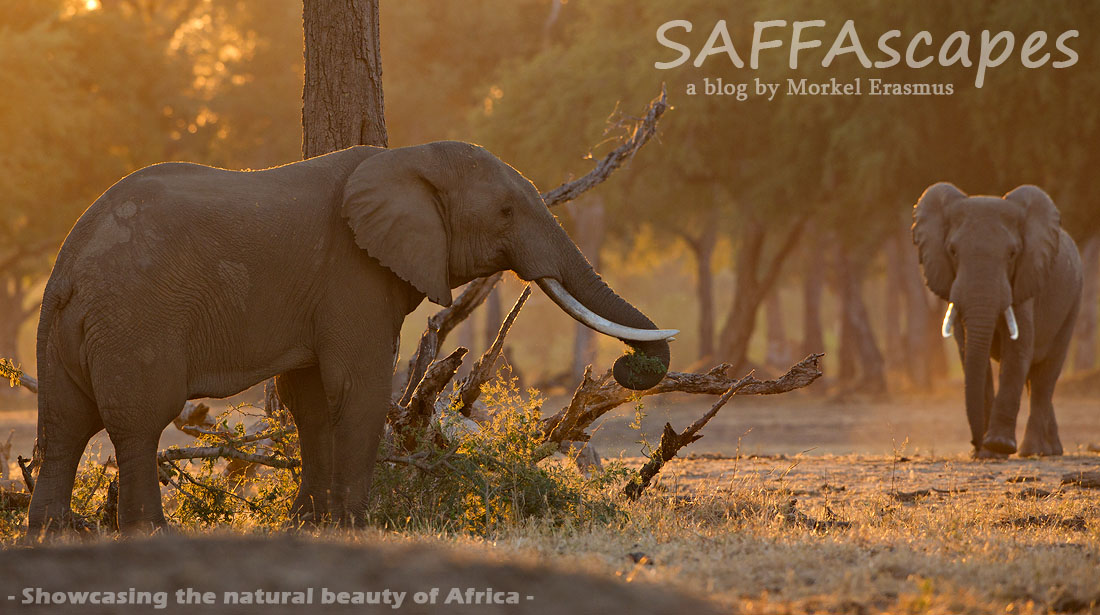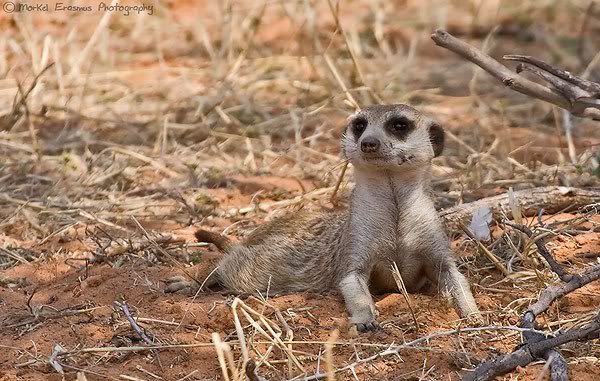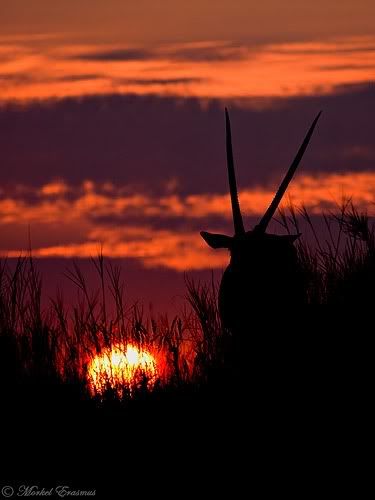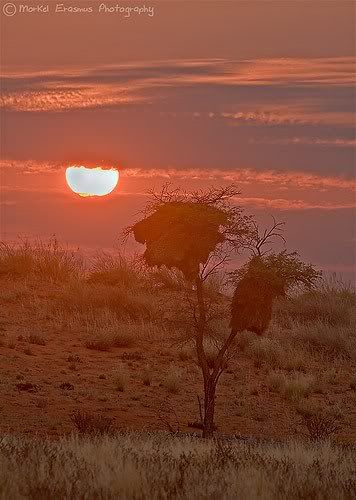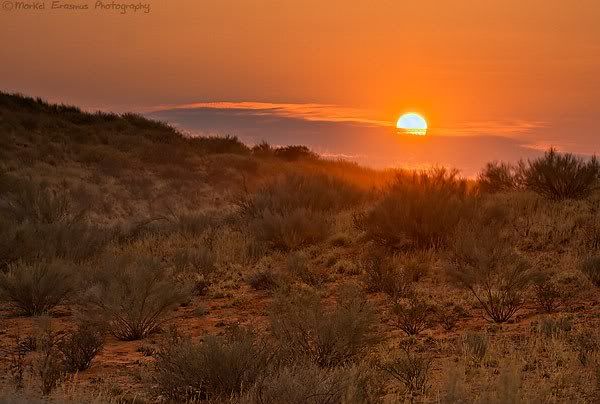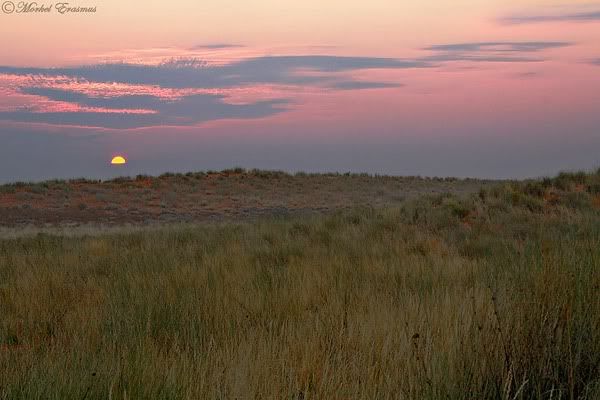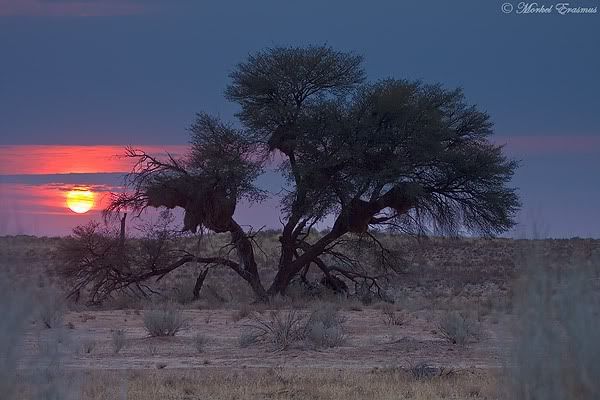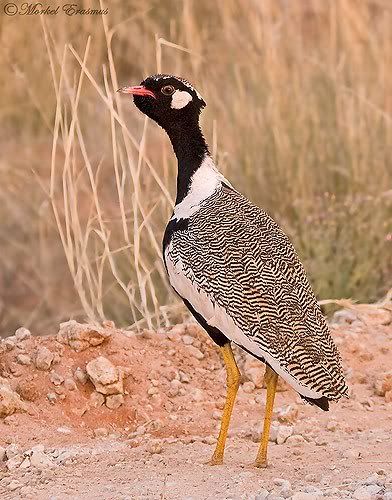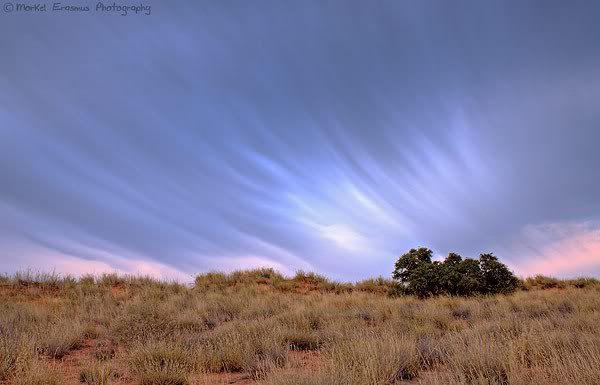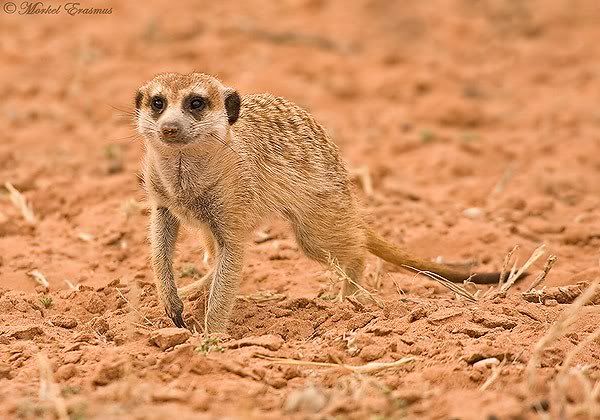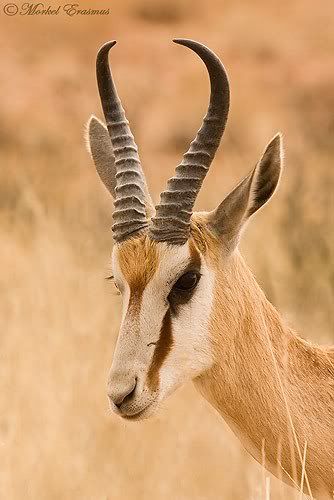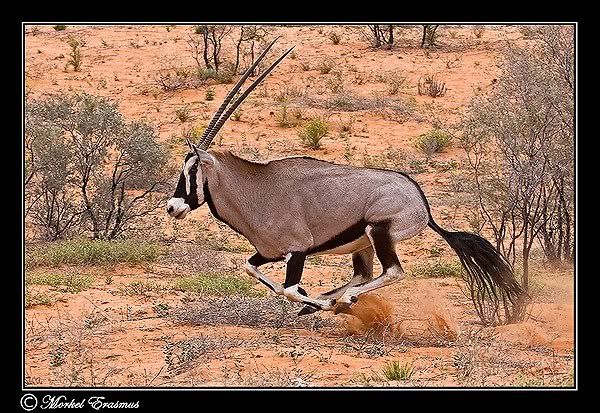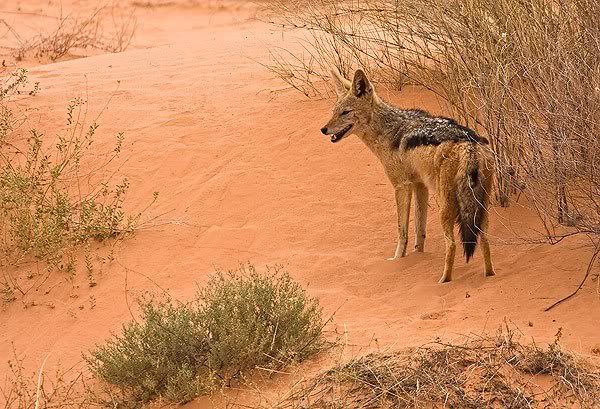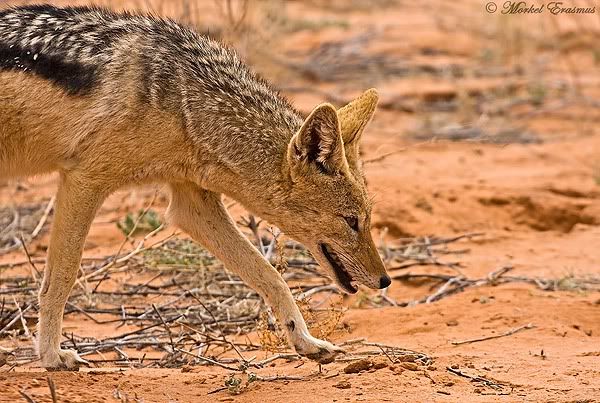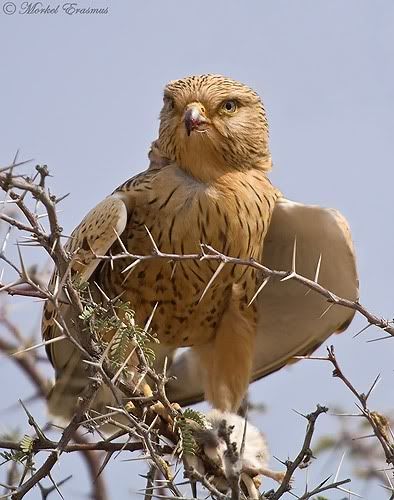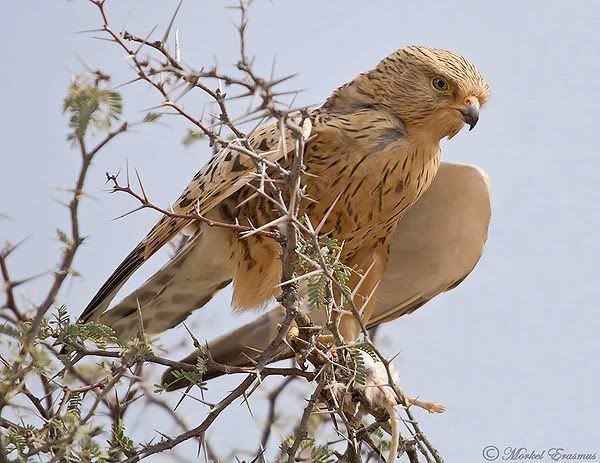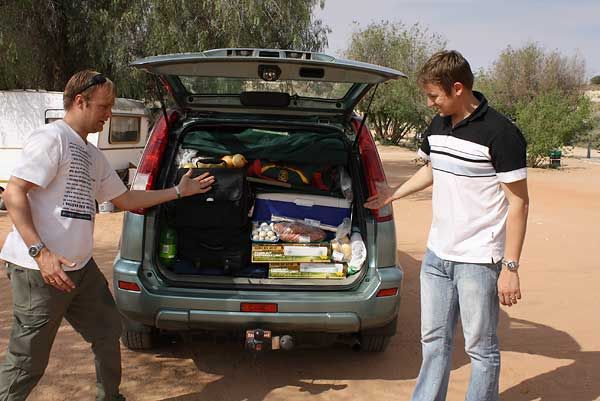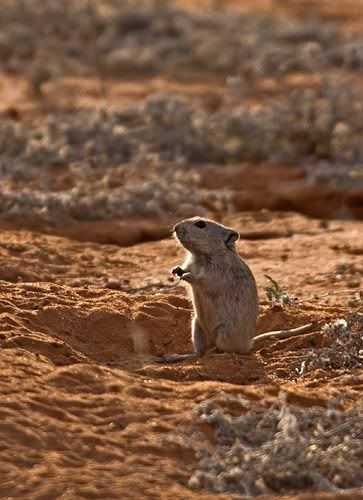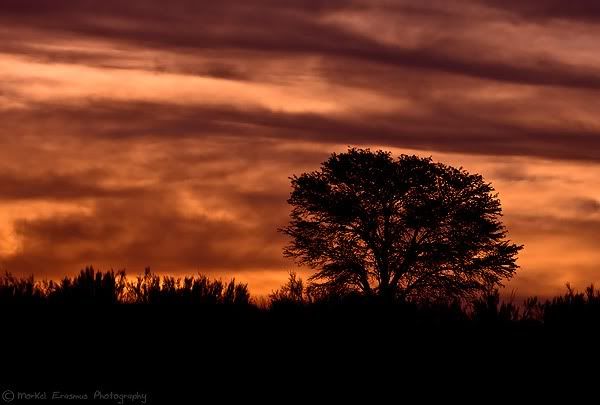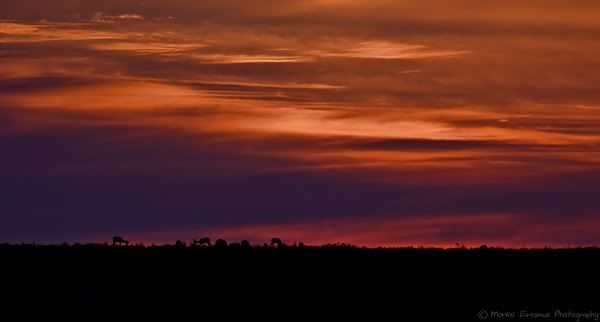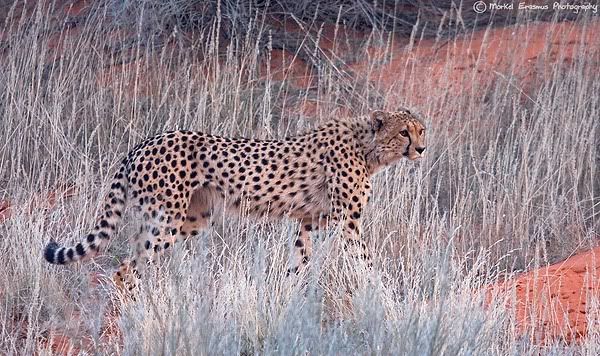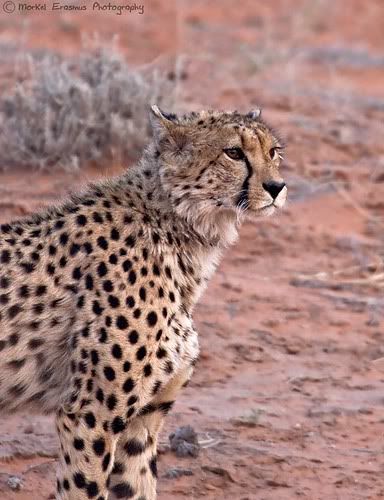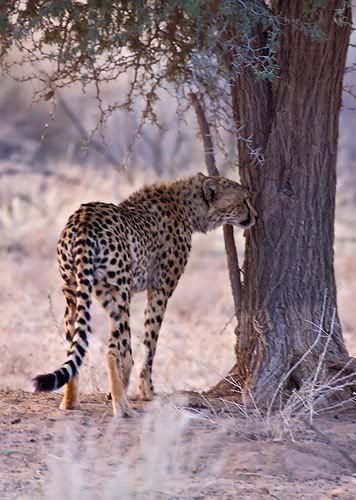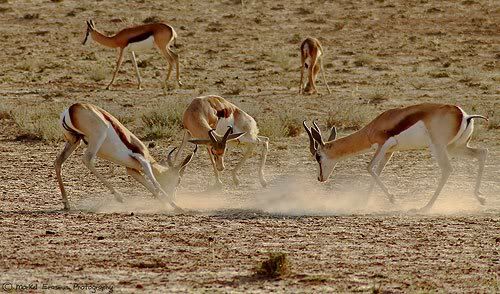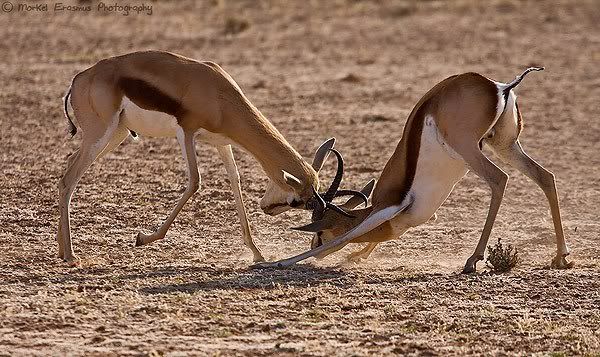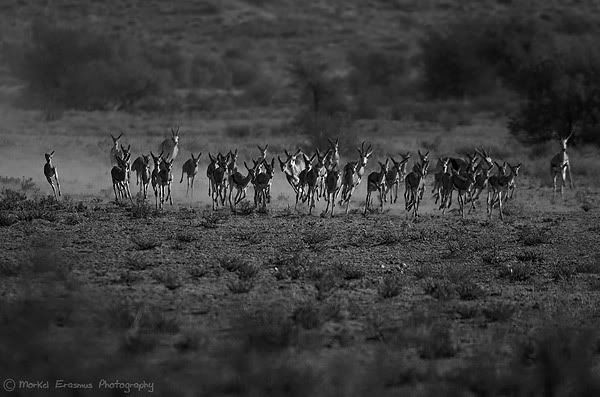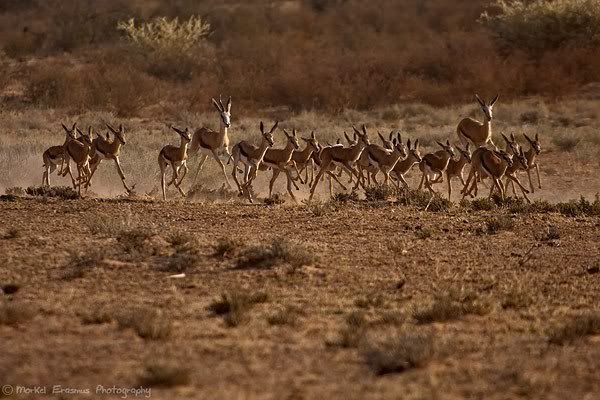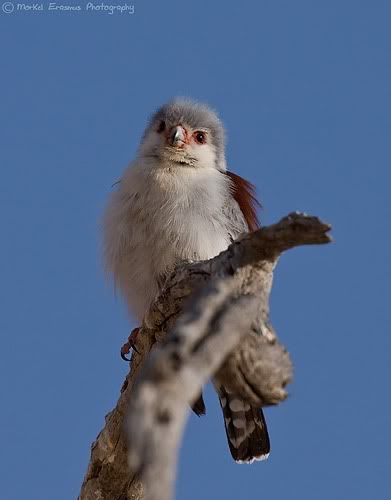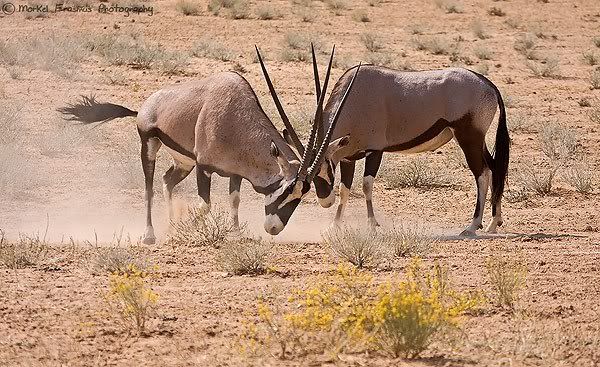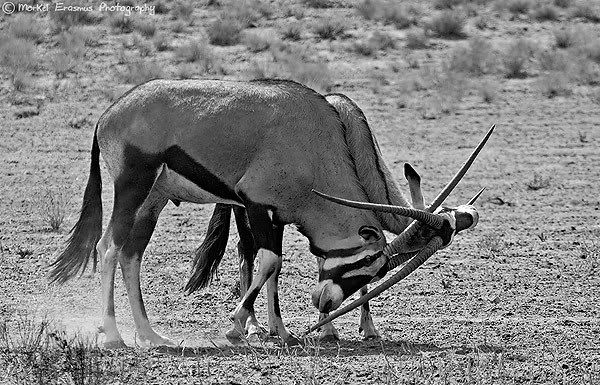The heat in the middle of the day in the Kalahari is searing, so we went back for some siesta time (although our tent didn't provide much solace, but the swimming pool was nice). On our afternoon drive we didn't see much, but this Meerkat (Suricate) was quite cute.
As we headed back over the dunes, we came across a herd of Gemsbok (Oryx) in a wonderful setting. You will notice that I use one of these images as the page banner of the blog.
We moved on, and took some more sunset photos...
We had a great braai that evening, and got up VERY early the next morning to pack up the camp and move on. We were headed to the Kalahari Tented Camp for 2 nights, which meant we would stay in tent-chalets and not have to set up camp again.
The sunrise was moody...
On the dune road to reach the Auob river we came across a female and male Northern Black Korhaan. As with most birds, the male specimen is the colourful one.
The light that morning on the clouds was magical. I call this the "Aurora Kalaharealis"...
Some Meerkats again provided entertainment...
Another antelope (gazelle actually) that is very common in the Kalahari is the Springbok.
We decided to take the long route to the Kalahari Tented Camp. The camp is situated just south of the larger Mata-Mata rest camp, and we decided to head over the lower dune road to explore a bit of the Nossob riverbed, before heading back over the upper dune road and towards our destination.
Gemsbok were running around in the dunes.
This region is also home to a variety of canids...the Black-backed Jackal, the Cape Fox and the Bat-eared Fox. We found some jackals in the dunes as well.
When we reached the Nossob riverbed, all was quiet, except for some Secretary Birds walking around looking for a late breakfast.
These iconic and odd-looking raptors are under threat in Southern Africa as their numbers are declining. Current studies are underway to determine the root causes.
We reached the upper dune road after a bumpy ride over corrugated roads without much in the way of good sightings. Our afternoon was about to get much better, but more on that later! First off, we encountered a breeding pair of Greater Kestrels in a tree along the upper dune road.
What's more...they had lunch with them...
That's the end of this episode, folks. Stay tuned for an amazing cheetah sighting and a surprise encounter with a rare feline...
Morkel Erasmus
